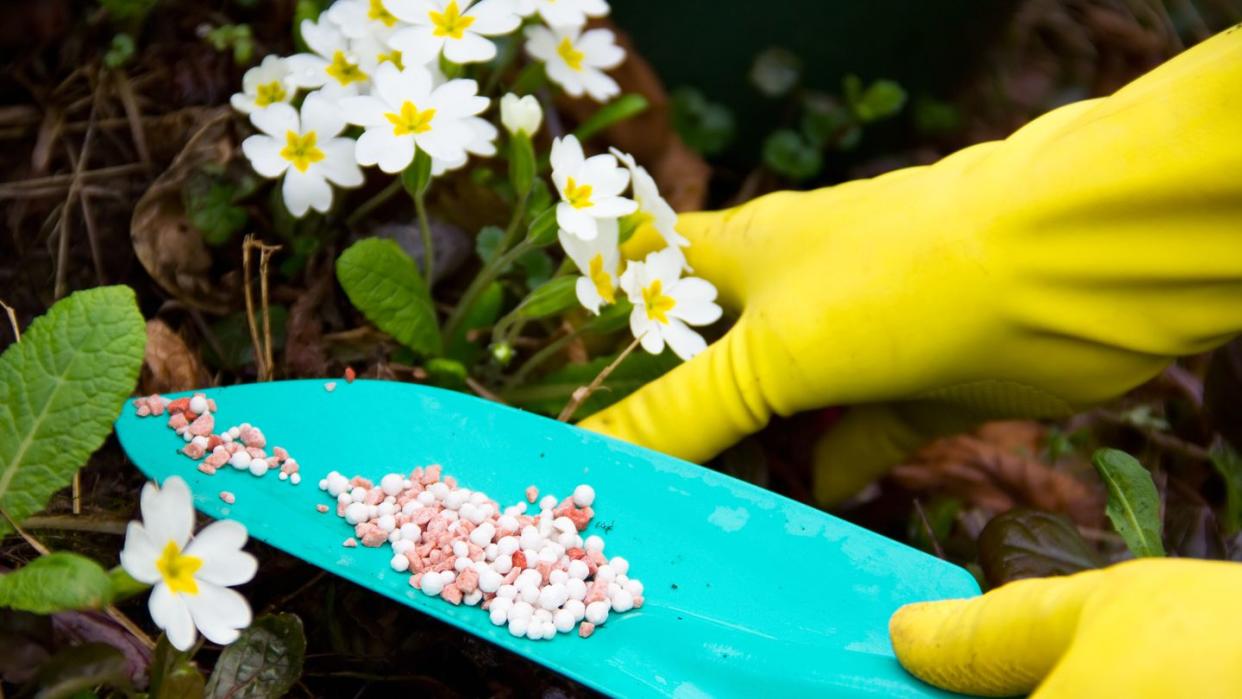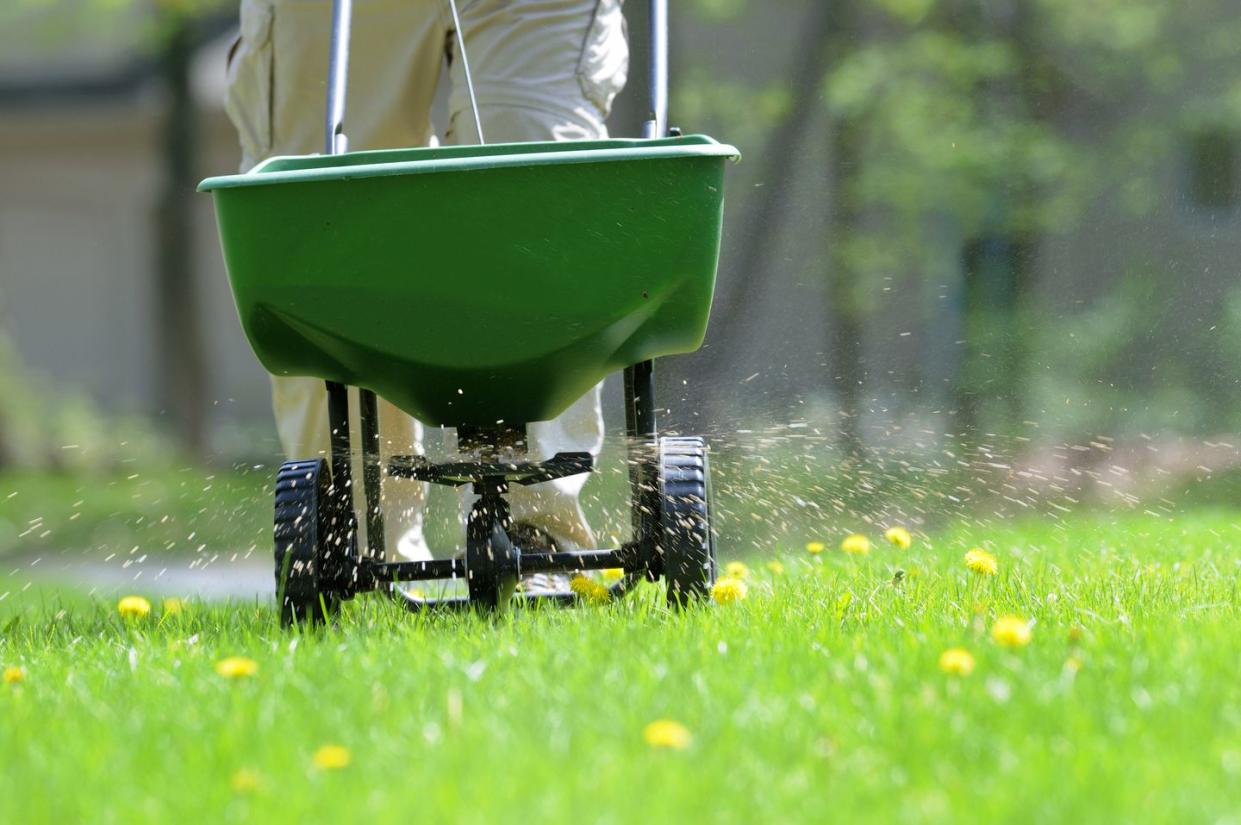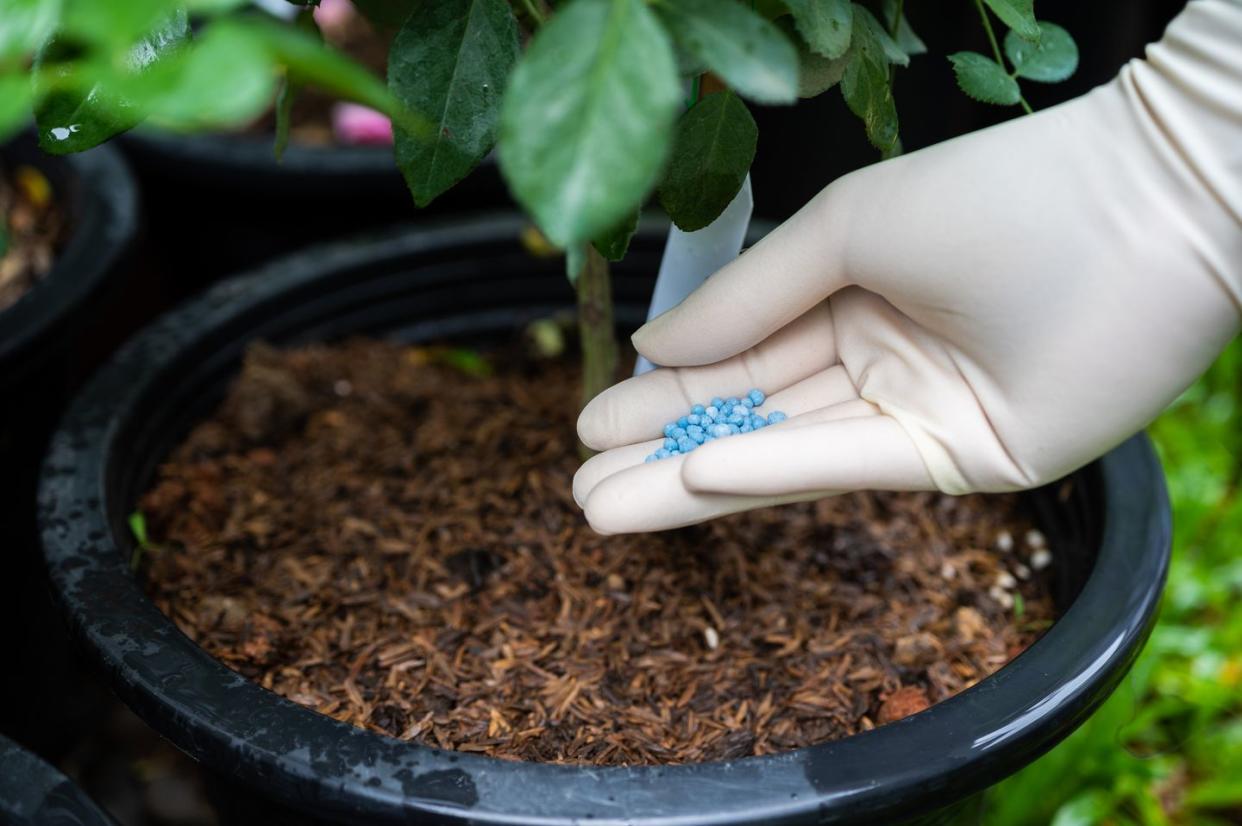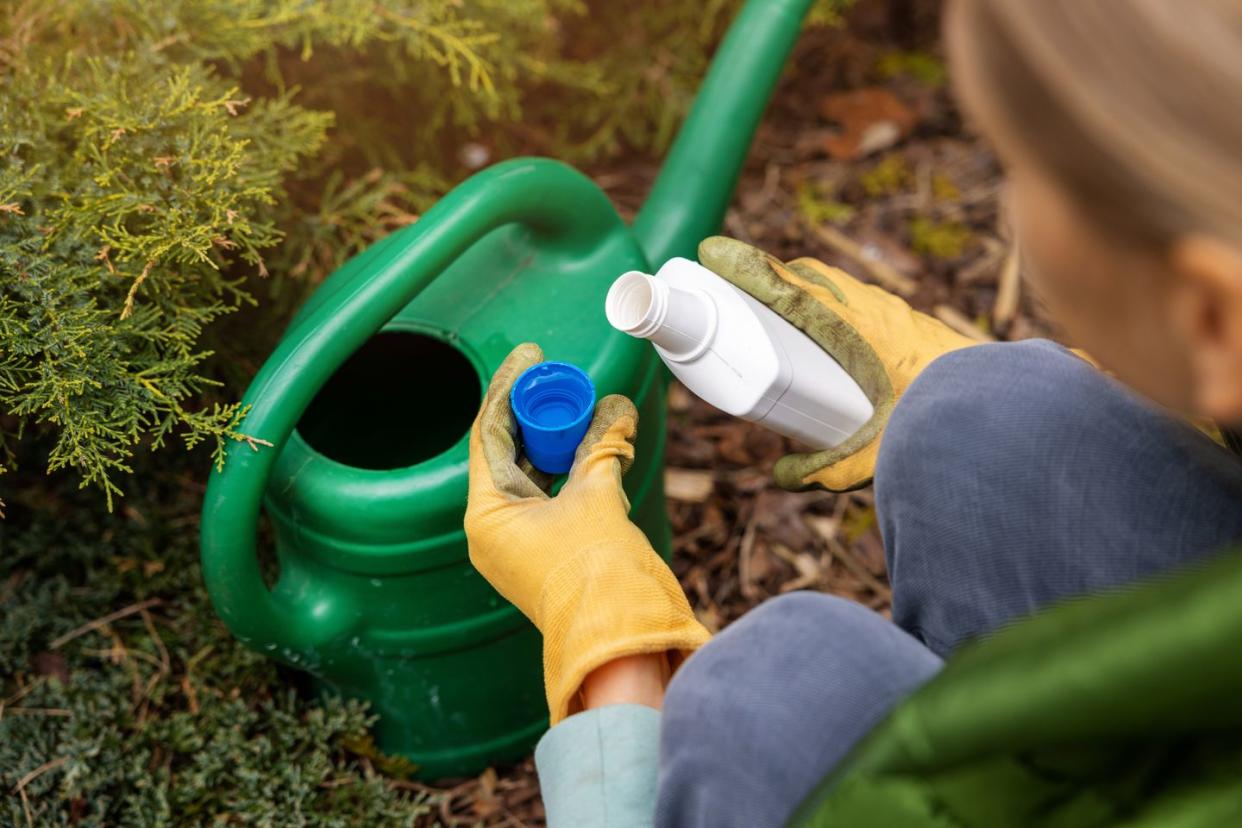Your Wilting Plants Need This Fertilizer ASAP

"Hearst Magazines and Yahoo may earn commission or revenue on some items through these links."
[table-of-contents] stripped
Many things contribute to optimal plant and garden health: picking the right plant variety in the first place, planting it in the right soil (and in a spot with right number of hours of sun per day), and applying the best fertilizer at the right time. 10-10-10 fertilizer can be a vital part of plant health and is a great choice to deliver most plants the macronutrients they need to thrive. However, there are rules you'll want to follow for optimal results.
To get a better understanding of what 10-10-10 fertilizer is, liquid vs. granular 10-10-10 fertilizer, and how and when to use each type, we reached out to Linda Langelo, a horticulture specialist at Colorado State University, and Chris Kleinguenther, chief of the New Jersey Department of Agriculture. Read on to learn everything you need to know about 10-10-10 fertilizer to keep your garden, lawn, or houseplants healthy.
What's in 10-10-10 Fertilizer?
If you're thinking the numbers must have something to do with it, you're right: 10-10-10 fertilizer ingredients consist of equal parts of (10 percent) nitrogen, (10 percent) phosphorus, and (10 percent) potassium. All three are among the 17 essential nutrients for plants, according to the Iowa State University Extension. Nitrogen is integral in part because it's a building block of chlorophyll, which plants use to make energy from sunlight. Phosphorus and potassium likewise help fuel growth. The chemical symbols for nitrogen (N), phosphorus (P), and potassium (K) give 10-10-10 fertilizer its other common name: NPK fertilizer.
Liquid vs. Granular 10-10-10 Fertilizer

Liquid 10-10-10 fertilizer is typically a concentrate that you dilute and spray onto large areas with a garden hose or sprayer or pour directly onto the soil in a container. Granular 10-10-10 fertilizer consists of pellets that you spread either by hand or with a spreader and then water to help it absorb into the into the ground.
The best type of 10-10-10 fertilizer to use depends on the situation, Langelo says. "Liquid fertilizers mix well and are absorbed easily," she says. "They give a more uniform coverage and are less likely to attract pests because they don't stay on the soil surface like granular [fertilizers] do. But proper application time is important. Late evening or very early morning can help avoid scorch if you use a spray. Liquid fertilizers can also be used on new transplants to help overcome transplant shock." However, she notes, "liquid fertilizers can cost more and are not as efficient in large gardens."
On the other hand, "granular fertilizer is often easier to apply since no special equipment is required," says Chris Kleinguenther, chief of the New Jersey Department of Agriculture. "However, the granular [fertilizer] must dissolve before it is available to the plant. This allows the chemical to be available to the plant over time."
Because it absorbs gradually, he says, granular fertilizer is a great option for heavy feeders like corn and tomatoes and flowers such as dahlias and butterfly bushes.
Liquid 10-10-10 Fertilizer
Easy to apply evenly with a garden hose
Less likely to attract pests than granular fertilizer
Starts working faster than granular fertilizer
Best applied in early morning or late afternoon
Can be more expensive than granular fertilizer for a large garden
Doesn't last as long as granular fertilizer
Granular 10-10-10 Fertilizer
Less expensive for large gardens than liquid fertilizer
Doesn't mix into the soil as easily as liquid fertilizer
May not give you as even of coverage as liquid fertilizer
Absorbs gradually over time, which can be a pro or con depending on your plants
How Do You Know If Your Plant Needs Fertilizer?

Take a good look at the plant's leaves, Langelo says. "A lack of nitrogen turns the tip of the leaves yellow and continues through the leaf and down the stem," she explains. "A lack of phosphorus turns the leaves a dull green and then purple. Potassium deficiency appears on older leaves, and the margins turn yellow and then brown. The leaves tend to curl and the plant has stunted growth."
How to Use 10-10-10 Fertilizer
You can apply 10-10-10 fertilizer to individual plants or to your entire lawn. Follow the instructions on the package carefully, particularly the amount it recommends using for your soil and how often to apply it. You also want to take care to avoid getting fertilizer directly on the stem or trunk of individual plants because it can burn and damage them, according to the University of Georgia Extension.
When to Use 10-10-10 Fertilizer

"Generally, nutrients are best applied in the spring through mid-summer," Kleinguenther says, but there are nuances.
With vegetable gardens, spring is best, but it depends on the plant, Langelo explains. With tomatoes, for instance, "applying an initial nitrogen fertilization when you first plant it is acceptable, but you'll also want to apply another when you first see the flowers and another when you see the first tomato start turning slightly red."
With most popular houseplants, you'll want to target spring and summer, she says. Orchids are an exception: "Orchids need regular fertilizer from spring to fall, and then in the winter only every two to four months."
When to Stop Using 10-10-10 Fertilizer
Fertilizer generally shouldn't be used outside of a plant's active growing season. In most cases, apart from orchids, "nutrients should not be applied in late fall or winter since plants such as lawns and perennials are going dormant and added fertilizer will stimulate growth, which could hurt plants," Kleinguenther says. For roses, you should stop a bit sooner—six to eight weeks before the first frost, Langelo says. For lawns, she adds that you should avoid applying fertilizer in the heat of summer as well.
Follow House Beautiful on Instagram and TikTok.
You Might Also Like
